
Fashion was very slow to adapt to our new hyper-connected reality, but has in a very short time managed not only to catch up but also innovate in the ways tech can be used to give an time-tested but fast-paced industry a lift. In the words of Heidi Klum, in fashion, much like in tech, “One day you are in and the next you are out”, so lets take a look at some of the hottest trends right now:
1. The reinvention of runway shows
Fashion shows were always at the heart of fashion and part of why fashion was so reluctant to give in to social media, as the high level of competitiveness between designers and maybe a touch of diva attitude demanded top secrecy surrounding the shows.
Backstage: Now designers welcome the “intrusion” backstage and are the first to tweet out first looks. Oscar de la Renta crowdsourced runway coverage for his Spring 2012 collection live on his Tumblr and live-pinned his Bridal show on Pinterest. Burberry, a brand that has become the leading example when it comes to digital and fashion, hired photographer Mike Kus to present its Instagram followers with a real-time photo feed during its September London runway shows, while it tweeted animated GIFs of backstage scenes and first looks.
Front row: The front row has also transformed: among the editors and celebs, bloggers have secured their seats and now “common” influencers from the land of Social Media, like the winner of the Rebecca Minkoff Runway Design Challenge on Polyvore, start reserving their seats as well. We’ve seen influence on social media become the golden ticket into exclusive fashion events, and a FNO party in Florida by Bal Harbour Shops, where the doors opened only for people with a Klout score above 40.
The show: The direction of shows has also changed and adopted a more cinematic approach. In the latest season of Tyra Banks’ America’s Next Top Model runway show, the two finalists took part in a fantasmagoric show for Forever 21 where the models interacted with projections. Always ahead of his time, back in 2006 Alexander McQueen used a hologram version of Kate Moss that modeled a dramatic organza gown, seemingly appearing out of the air inside an empty glass pyramid. Last year Burberry revisited this trend and used a mix of real models and holograms to present its collections on the occasion of its Beijing store opening. German designer Stefan Eckert has collaborated with motion graphics designer Tim Joeckel for his latest fashion show to present his clothes exclusively on a virtual model in the world’s first 3D hologram fashion show.
Almost all of the shows nowadays are broadcast live, often in 3D ( Burberry, Hugo Boss, Castelbajac) but how long before you have holograms modeling the latest collections right in your living room or in selected locations all over the globe? This way the runway show will become more open but also a more intimate experiences where consumers can revisit a look, watch it walk down the runway again, and examine it in detail with a 360-view.
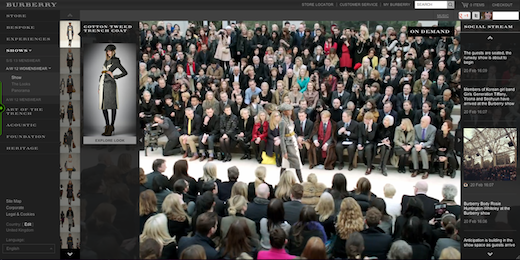
Shop straight from the runway: Opening up the runway shows to the public has affected the system of buying, as well as the cycle of production. Burberry allowed attendees of the London Fashion Week runway show special events streaming at global Burberry boutiques in spring/summer 2011 to order items right off the runway through an iPad application and get them much earlier before the same items are scheduled to arrive in the shops.
Pre-ordering from the catwalk, as well as analysing the looks that got the most positive buzz online, is an excellent way for both designers and buyers to get a sense of which might be the strongest looks from the show. In this way tech is helping fashion revitalize a very old trend – trunk shows and private views for VICs ( Very Important Customers) – on a much greater scale. Moda Operandi (which stocks many high-end designers like Alexander Wang and Marc Jacobs) offers online trunk shows, as well as from-the-catwalk ordering.
Members-only e-commerce subscription site StyleMint.com recently hosted a live shopping event on its Facebook page that enabled shoppers to purchase apparel at discounted prices, while also interacting with the brand. By adding social elements (styling tips customized to your shopping profile) and virtual shopping assistance, brands could take personalised couture to a new level.
2. Crowdsourcing and curation
There’s been a lot of talk – and action – around crowdsourcing and curation. Brands have used crowdsourcing to generate buzz on social media but also to spark an emotional connection with their customers and curation to leverage influencers’ networks and create shopping experiences that merge editorial content with retail.
Crowdsourcing: Threadless was one of the first e-tailers to let the crowd in on their creative process by letting them vote on their favourite t-shirt designs to go into production. Many fashion brands have tapped into the power of creative platforms, like Polyvore, which leverages its active community for crowdsourcing contests. Moxsie was of the first brands that put customers in the role of the buyer, with its regular scheduled Buyer Chats on Twitter and Modcloth did the same on Facebook, taking things a step further by producing a whole collection based on user-generated designs.
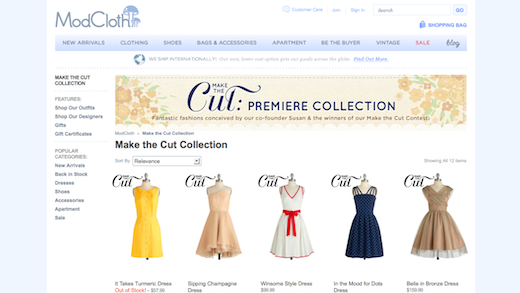
Producing crowdsourced products helps brands generate buzz online, build a deeper connection with their customers and gain valuable insights on consumers’ preferences. On the other hand, consumers may know what they want today but they don’t always know what they want tomorrow and for this reason brands use crowdsourcing in a smaller scale so that they can handle short cycle production.
Curated commerce: A growing number of fashion sites at the affordable end of the market work with influential bloggers, stylists and celebrities to sell products via e-shops with an editorial feel. London-based Stylistpick, offers consumers a “personalized showroom” full of products selected by well-known stylists. #MyMix for eBay in the UK and Germany is curated by The eBay Style Collective a group of fashion bloggers, stylists and eBay fanatics. Yoox often features a section with picks by celebs like the most recent Orlando Bloom: His choice for her. ASOS finder is curated by its own community.
Sites that used mechanism for personalized curation, like Google’s Boutiques.com, haven’t caught on so far, partly because in order for a successful recommendation system to work effectively it needs significant volumes of user data, and shopping preferences in fashion change extremely quickly. Maybe a hybrid shopping site that uses recommendation engines along with shopping assistance by professional stylists is the next step.
3. Mixing online and offline
Consumers expect to have the same personal experience when they shop online as with brick and mortar stores and they expect the same convenience and speed in-store at the same levels as they enjoy online. According to research, customers value technology that makes shopping easier, with 63% of the respondents interested in using services like handheld scanners and 45% in-store kiosks.
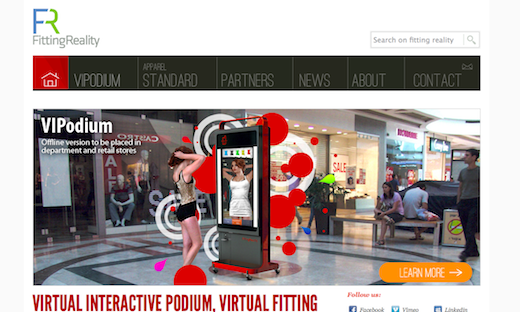
Interactive dressing rooms and mirrors: Dressing rooms enhanced with augmented reality and social media features could transform the shopping experience altogether. Shoppers this way could easily try on different looks and get feedback from friends in real time.
Fitting Reality, which pitched only a few days ago at Bizspark Europe, builds virtual fitting rooms with Microsoft Kinect technology. Irish start-up Von Bismark, uses the Kinect camera and Intel’s AIM Suite facial recognition software to turn a digital display into an interactive mirror, where users can touch and move around physical goods. Major cosmetics brands, like L’Oreal, Maybelline and Shiseido have already started testing special kiosks (mostly in the Asian market) that enable shoppers to virtually try on makeup by simply taking a picture. The “mirror” takes into consideration skin tone, facial features and product colour to make recommendations and allows the consumer to share a virtual makeover image with friends online.
In-store use of iPads & Mobile: Mobile devices used by sales associates are also perfect for data collection in addition to providing instant access to product data. Of course, something like this would presuppose the constant education of sales people in these tools.
Tory Burch is using mobile in-store enabling sales associates to log onto the site with personalized log-ins on their iPads, so all activity can be linked to that employee and store.
In China, Burberry stores, with interactive touch screens the size of mirrors and sales staff armed with iPads, let customers mix, match and customize beyond the inventory available onsite. At Guess, iPads in-store enable shoppers and store associates to browse various styles via the LookBook functionality, select products for immediate purchase and order online. At selected Nordstrom locations, sales associates on hand with pre-loaded iPads can help customers order made-to-measure suits. Associates take and record measurements, and collaborate with customers on cut, fabric and design details.
Interactive store windows: Store windows could not only become impressive shows, but also go beyond gimmicks and become a personalized “front page” of the store. Immersive Labs, which has focused so far on advertising and Kinect, could easily apply its tech to store windows and apart from extending a personal invite to the customer to walk in a store, provide the brand with valuable insight on customer’s response to its window and the products showcased.
We’ve seen the tech applied to art installations like in the case of Nordstrom in downtown Seattle, where passers-by could draw with light on the back wall, and Repetto that with motion tracking enabled people to interact with its store window in Paris and zap through several ballet videos made by Marcel. Luxury diamond brand De Beers brought its window displays to life at its London Old Bond Street and New York Fifth Avenue flagship stores by projecting a specially created 3D film by Holition on customized Alioscopy screens that don’t require 3D glasses.
A more practical application is Adidas Virtual Footwear Wall, which allows shoppers to explore shoe collections in 3D, examine details in close-up and see the designs from different angles. The wall also provides relevant content with each shoe in form of text or video.
Interacting with products: A customer can easily interact with products online, share them on social media to get feedback from friends, research for styling tips, save them on their wish list to buy later, etc. What happens in-store? I remember back in the days fashion bloggers would often get into arguments with sales persons for their “no photos in-store” policy, well safe to say this is water under the bridge today. By simply providing WiFi, QR codes or AR technology, brands can enable shoppers to interact with clothes as much as online, if not more.
In Brazil, retailer C&A has launched FashionLike, which works like this: whenever sometime ‘Likes’ a clothing item online at C&A Brasil‘s site, it is tallied on a screen embedded on clothes hangers in store. Macy’s Backstage Pass provides customers with celebrity tips via QR codes on tags.
4. Shop from anywhere
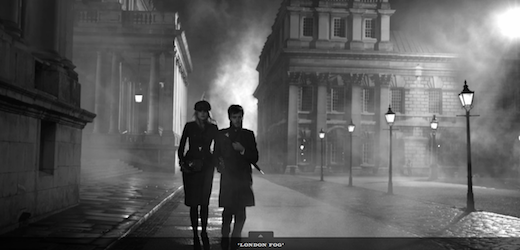
The Internet, well at least since the dial-up era, has made us all the more impatient, especially when it comes to immediate access to information. Customers see something they like and they want to get it right away. A few clicks later they may have already picked something else equally shiny and easy to access. I bet you’ve heard a lot fashionistas wishing for a ‘Shazam for fashion’, and although this is not a reality (…yet!) brands have made efforts to make their clothes easily ‘shoppable’ wherever you see them online. From fashion magazines online and offline, to ads, like Burberry’s latest interactive campaign for its autumn-winter collection, to social sites like Polyvore, Fancy, Pinterest, Pinshoppr , Lyst and Svvply
5. Tablets and mobile
Mobile seems to work best for shopping with intent, while tablets seem better suited for more relaxed shopping. According to a survey conducted by Nielsen in Q1 2012, the vast majority (79%) of US smartphone and tablet owners have used their mobile devices for shopping-related activities. Smartphones are used more often than tablets for activities on-the-go: “Locating a store” (73% vs. 42% for tablets ), “using a shopping list while shopping” (42% vs. 16% for tablets) or “redeeming a mobile coupon” (36% vs. 11% for tablet owners).
However, tablet owners are much more likely to use their device for online shopping: 42 percent of tablet owners have “used their device to purchase an item,” compared to just 29 percent of smartphone owners. eBay reached a record $5 billion in mobile purchases (from smartphones and tablets) in 2011 and predicts this number will climb to $8 billion by the end of this year. For Guess, mobile makes up 15% of online revenue. At flash site Rue La La, m-commerce is 18% of business during the week and 30% on weekends.
Seeing high conversion rates from mobile, brands are happy to invest further, offering mobile-exclusive offers to consumers, merging mobile shopping with the in-store experience, broadening mobile and tablet capabilities beyond Apple products, shoppable mobile ads ( ex. Kate Spade, Victoria’s Secret ) and adding social elements to mobile shopping.
Who does it best? Sephora is at the top spot in L2’s first Prestige 100: Mobile IQ Index having a mobile site that is m-commerce compatible, an iPhone app that integrates with an in-store retail experience and a highly engaging iPad app that allows consumers to follow how-to videos that teach them how to apply various products. Nordstrom, Macy’s, Net-a-porter and Bloomingdale’s took the remaining four of the top five spots.
6. Video
In numbers recently released by comScore, Internet users watched nearly 37 billion online videos in the month of April, in the US alone and watched 9.5 billion video ads. Though the fashion industry has so far invested mostly in the production of expensive artistic films and cheaper “behind-the-scenes” footage, it hasn’t managed to cash in this trend yet. Fashion films being produced, although looking good visually, haven’t managed to connect with the viewers via storytelling. If you check out the YouTube channels of most top fashion brands you will see most films earn much less than 100,000 views.
Social Video Networks: Brands are starting their invasion of Instagram-like video apps like SocialCam and Viddy. DVF is using Viddy to show backstage clips from fashion events and share personal videos starring Diane herself and her everyday work life.
Shoppable Videos: Montreal-based designer ecommerce site Ssense collaborated with Australian female rapper Iggy Azalea to create a shoppable music video. Popdust, a music news site, created a video featuring Amy Heidemann and Nick Noonan, the excessively chirpy pop duo known as Karmin, trying on a variety of clothes that can be shopped right from the site with Karmin getting a cut of the sales. This could inspire not only shoppable music videos but also how-to videos with styling tips offering instant shopping access.
Interactive TV: One in four (25%) people will regularly use interactive TV to shop by the end of 2014, according to new research by eBay UK. The study comes soon after WorldPay‘s Global Online Shopper Report, 21% of global shoppers already own a next generation interactive TV, and 24% of those who own connected TVs have already bought goods and services using them.
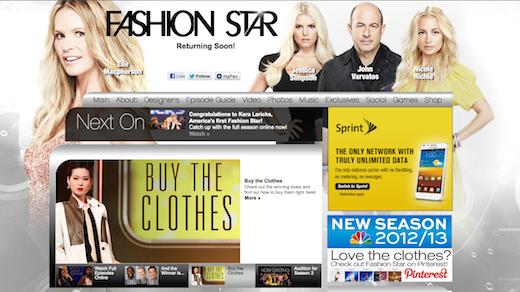
The huge success of Fashion Star on NBC showed the huge potential of shopping through TV. On the fashion reality show, contestants compete with each other to create the best clothes and have them purchased by a buyer from one of three stores: Macy’s, Saks Fifth Avenue, and H&M. The designs presented and bought by the stores would go on sale right after each show online and in stores. The show not only generated global buzz and is set to be broadcast in more than 75 countries, it has also set record sales for the stores involved, with the winning looks selling out in only a few hours.
The fashion industry has the money and creative talent to not only keep up with the tech industry but also push it and offer a vision for new ways to encompass tech in our day-to-day lives.
This post was inspired by my talk during the latest Bitspiration conference in Poland, you can find the slides on this topic below:
Get the TNW newsletter
Get the most important tech news in your inbox each week.





